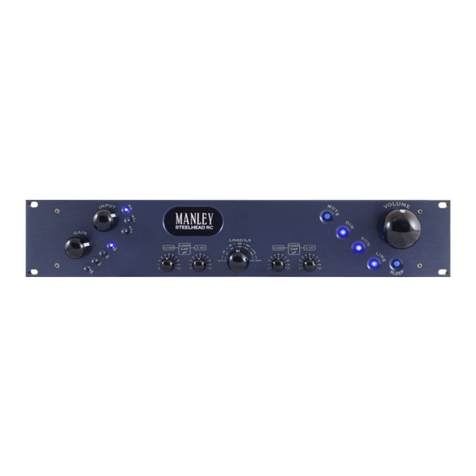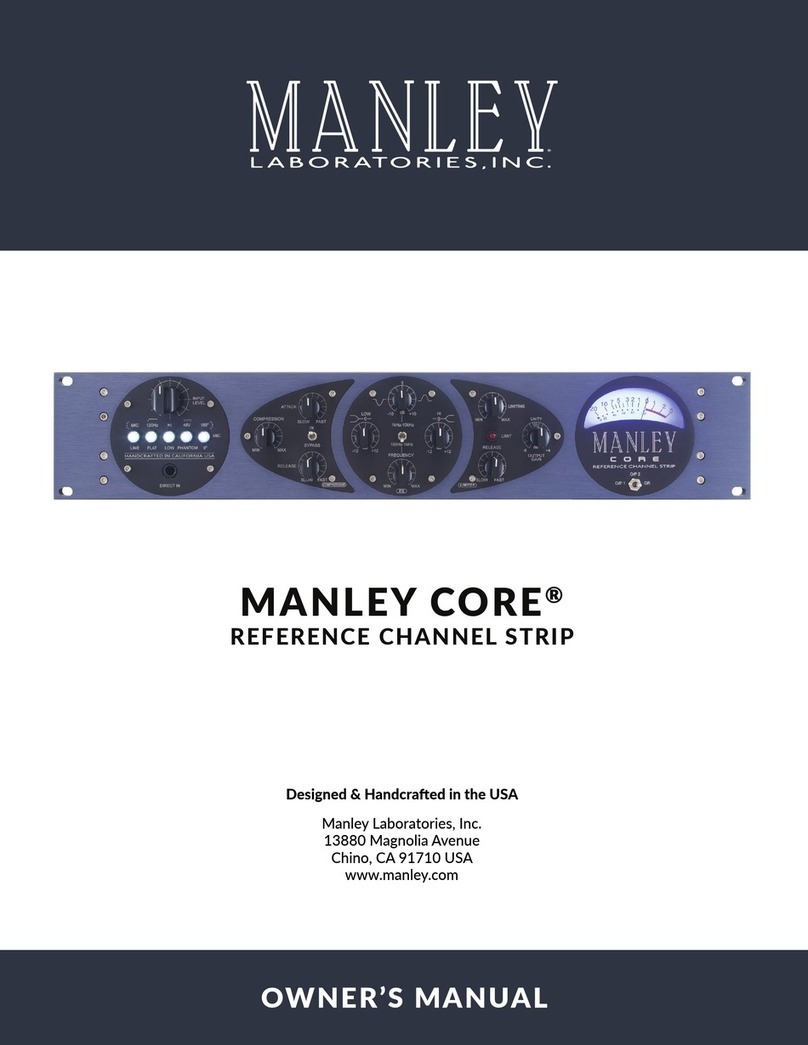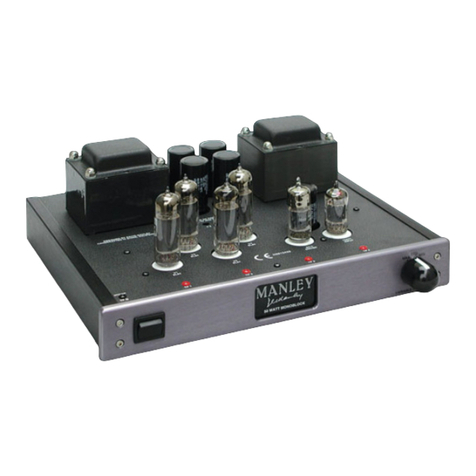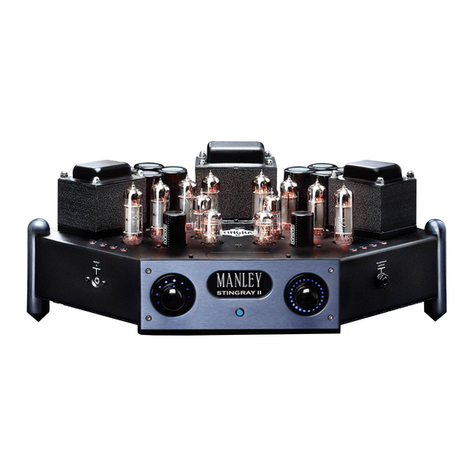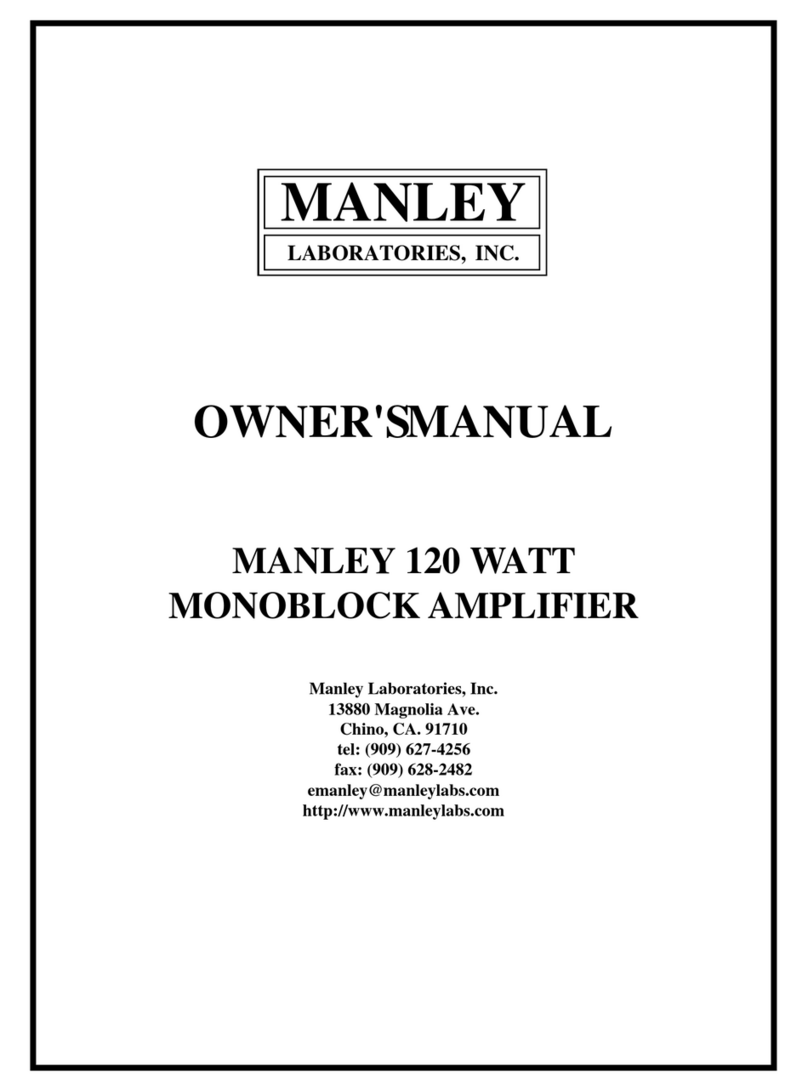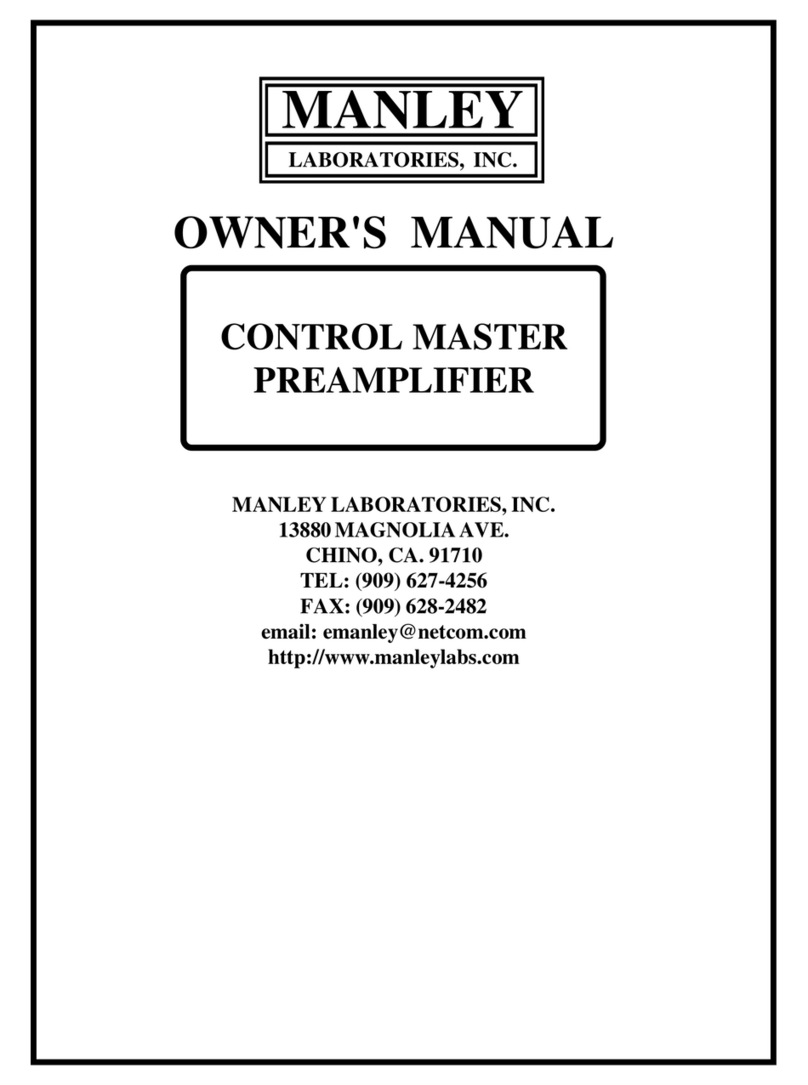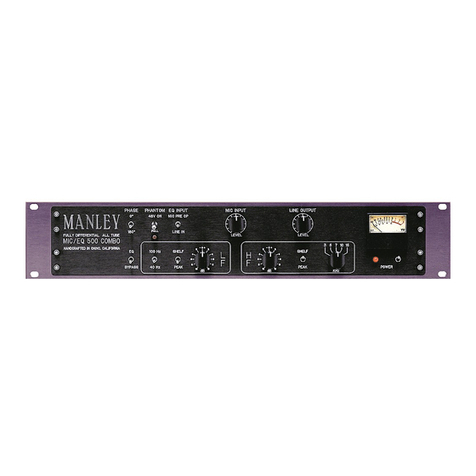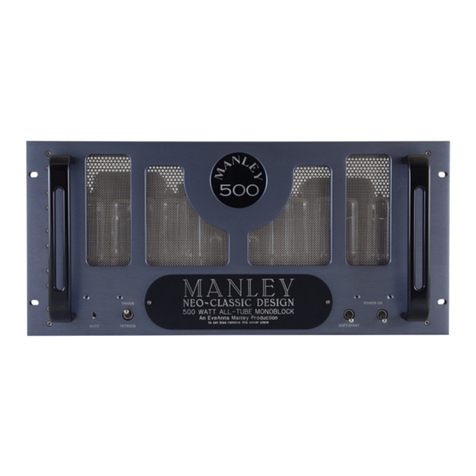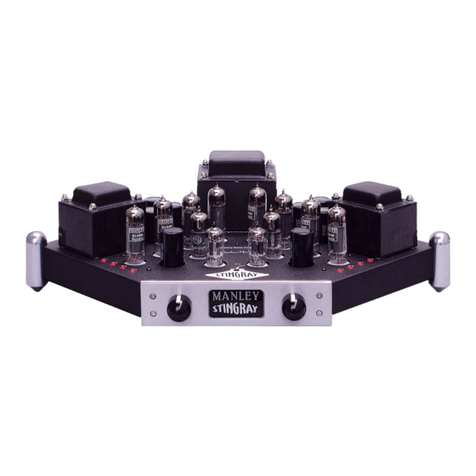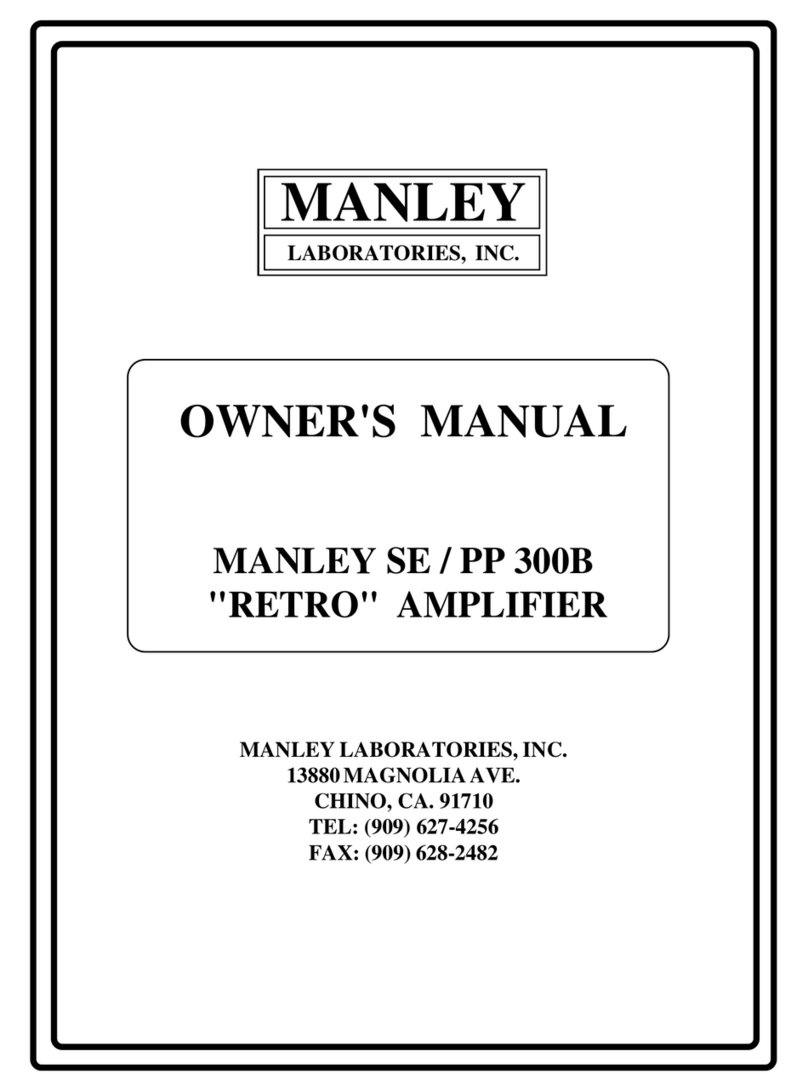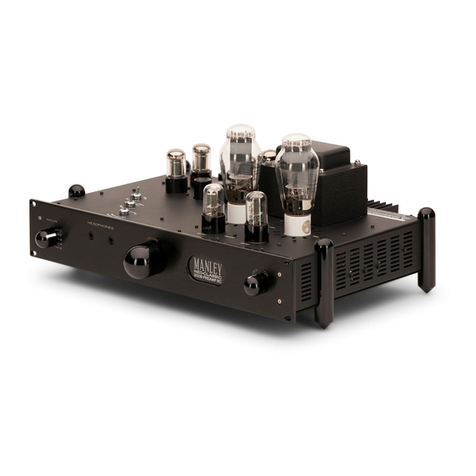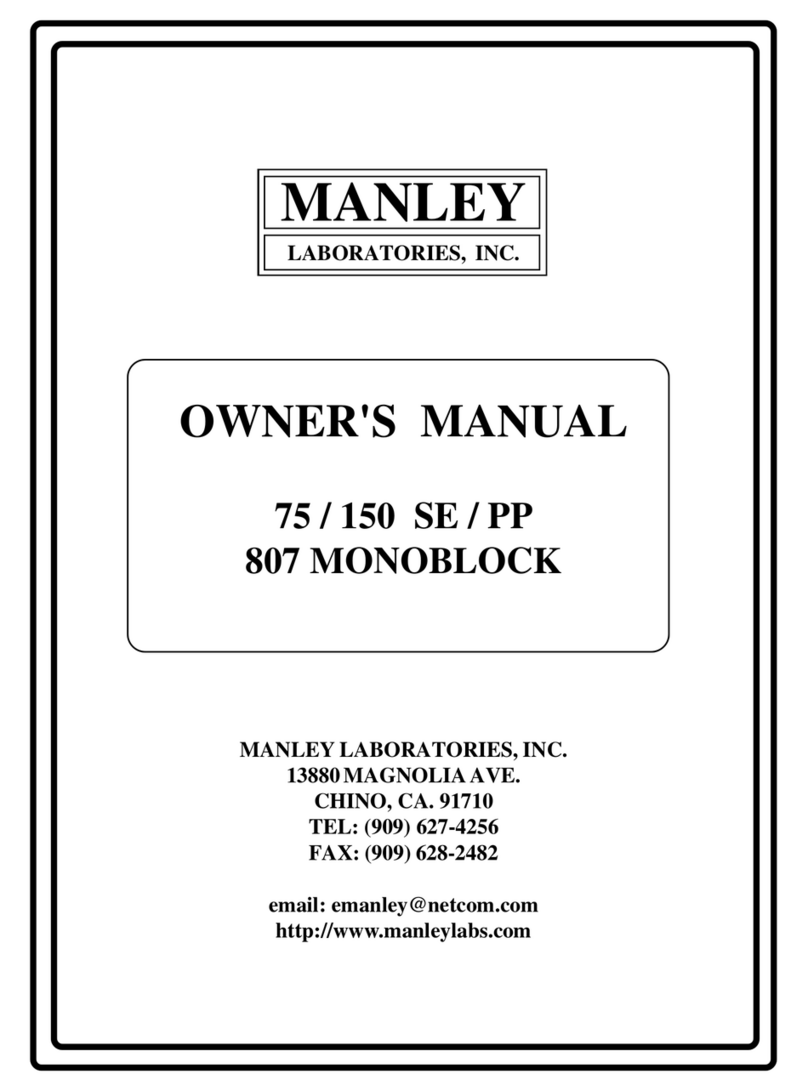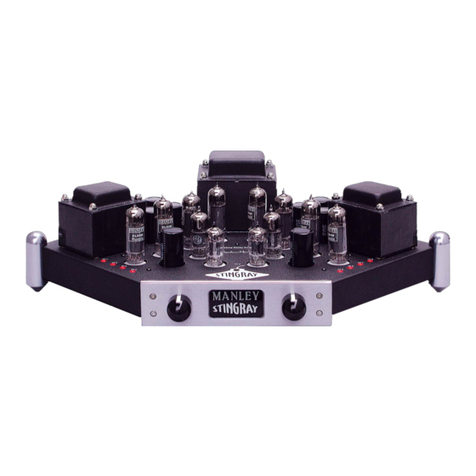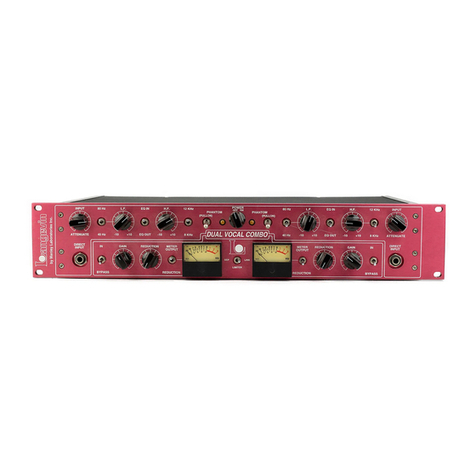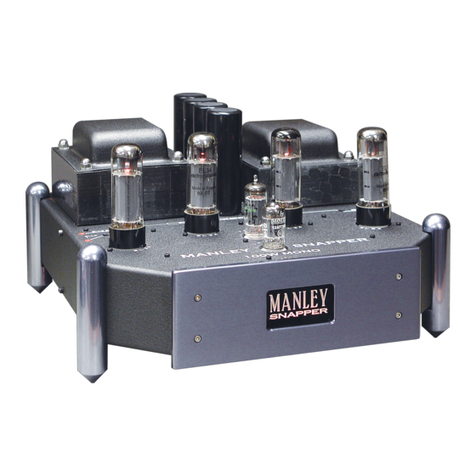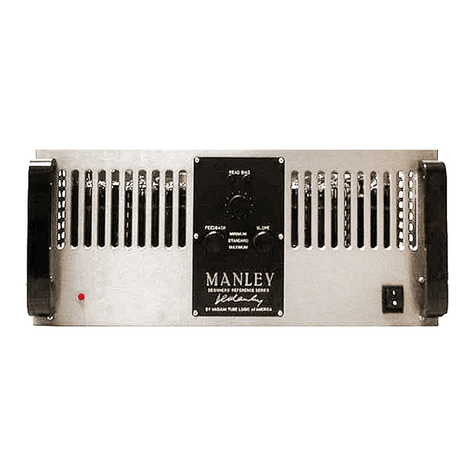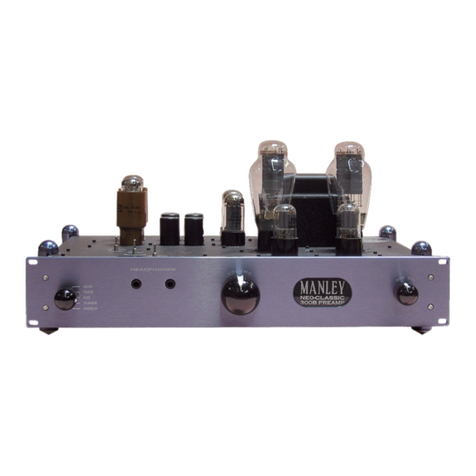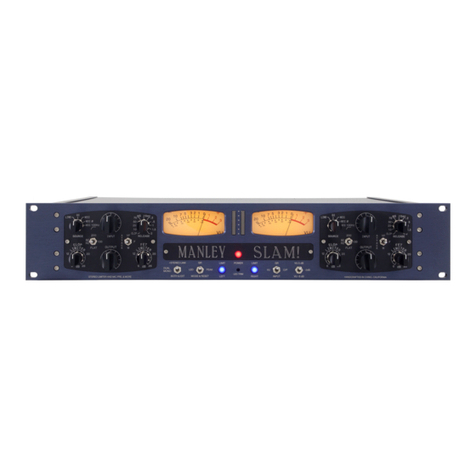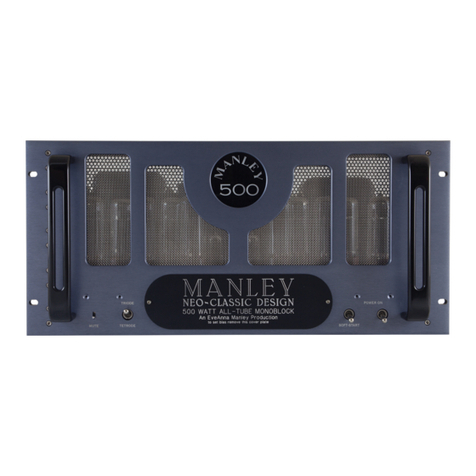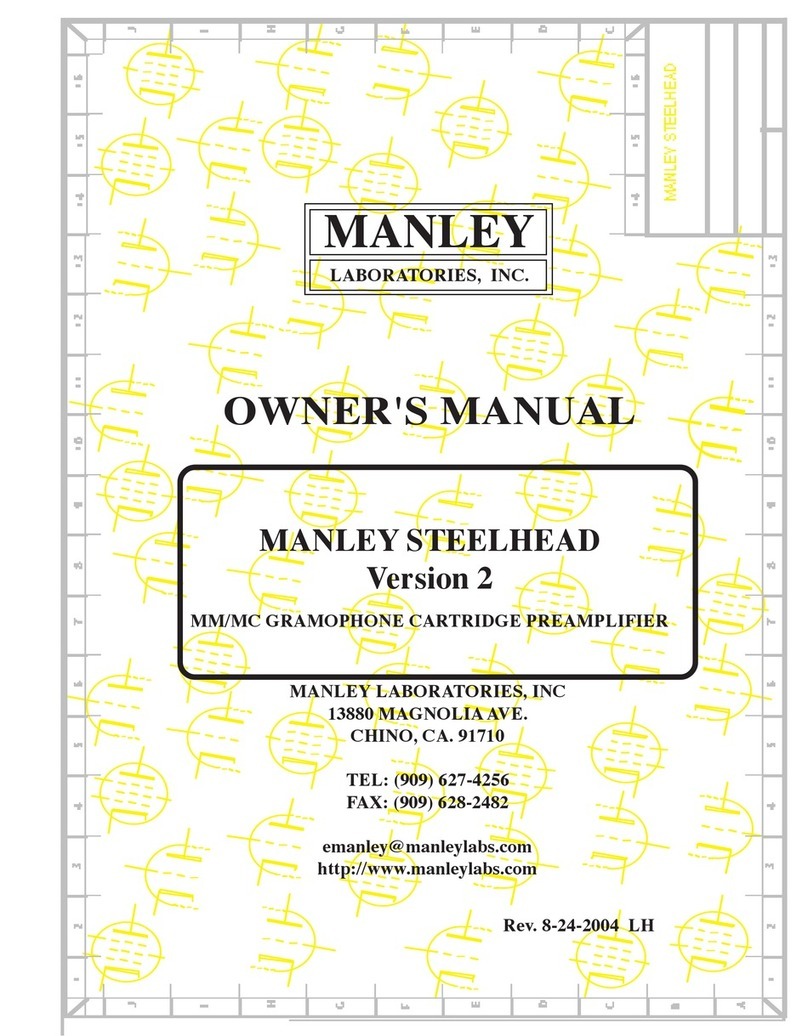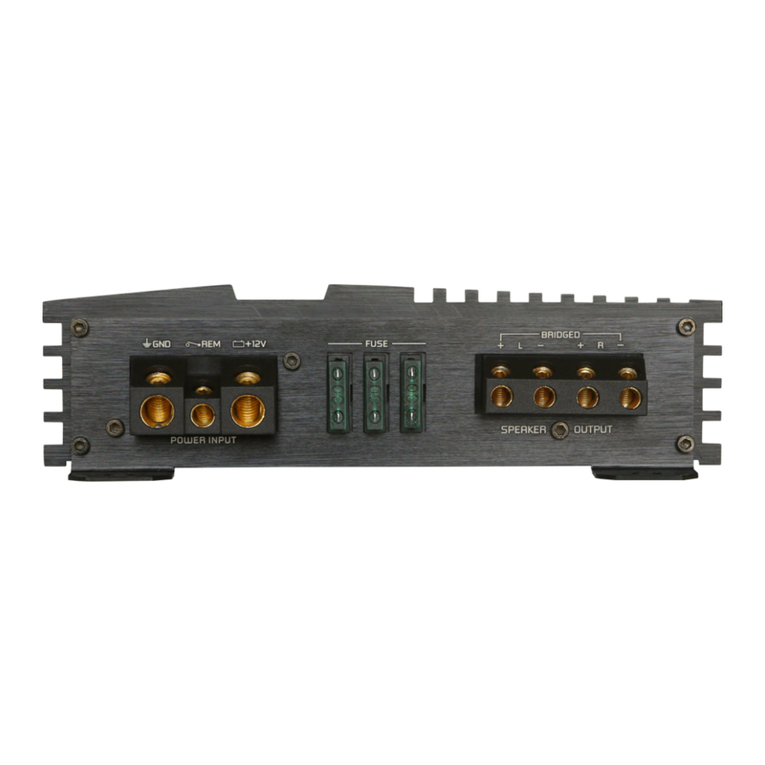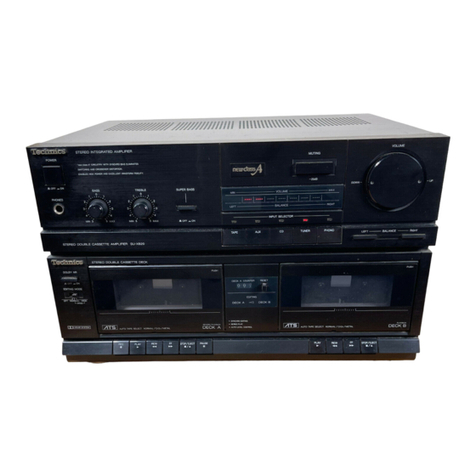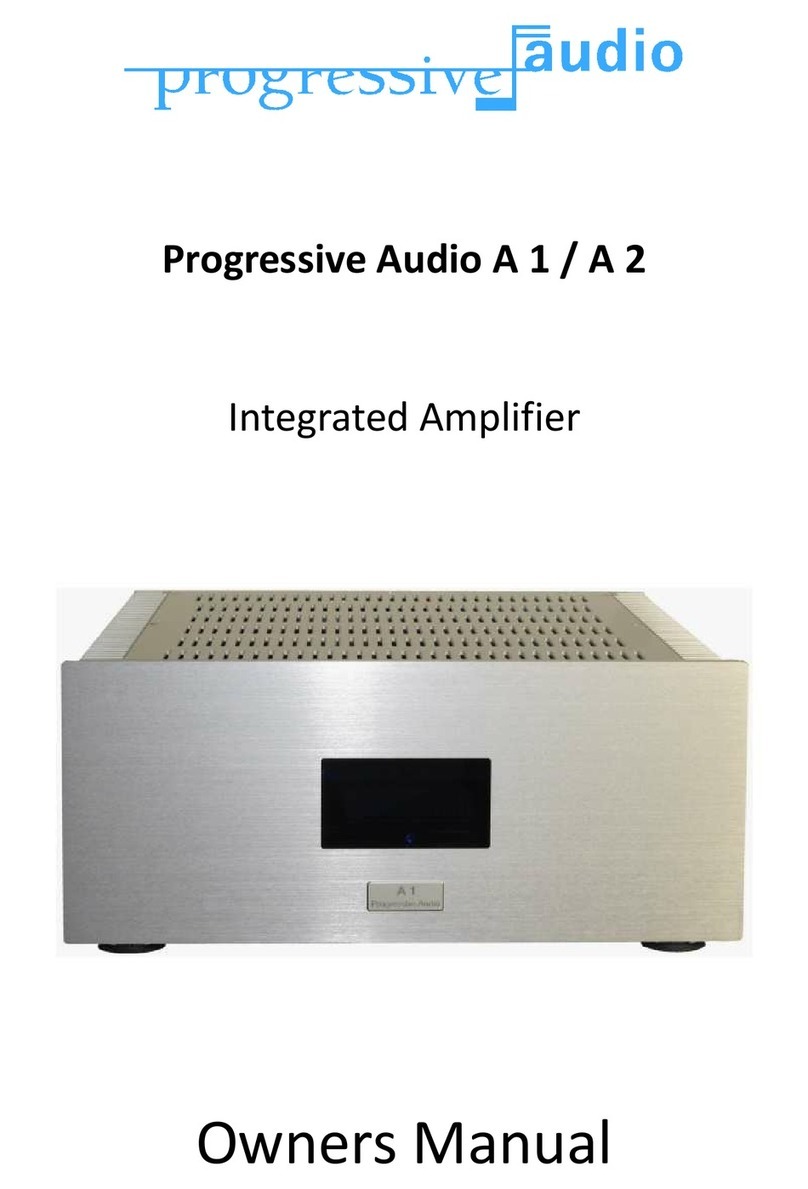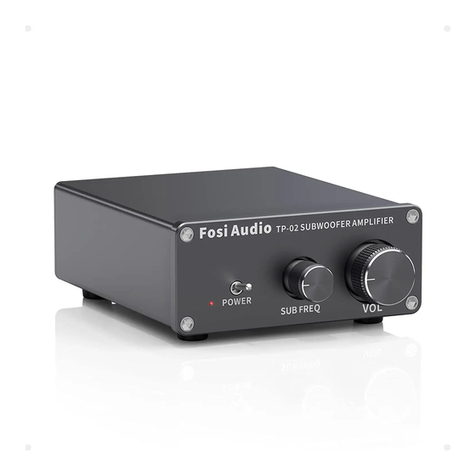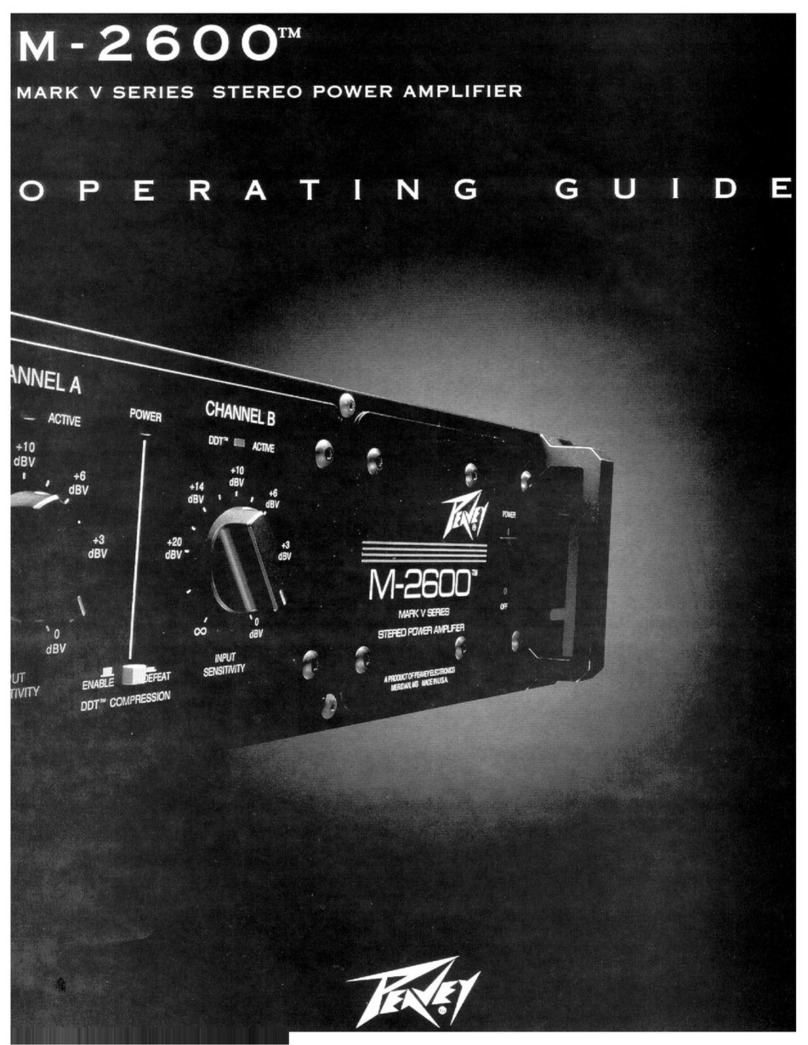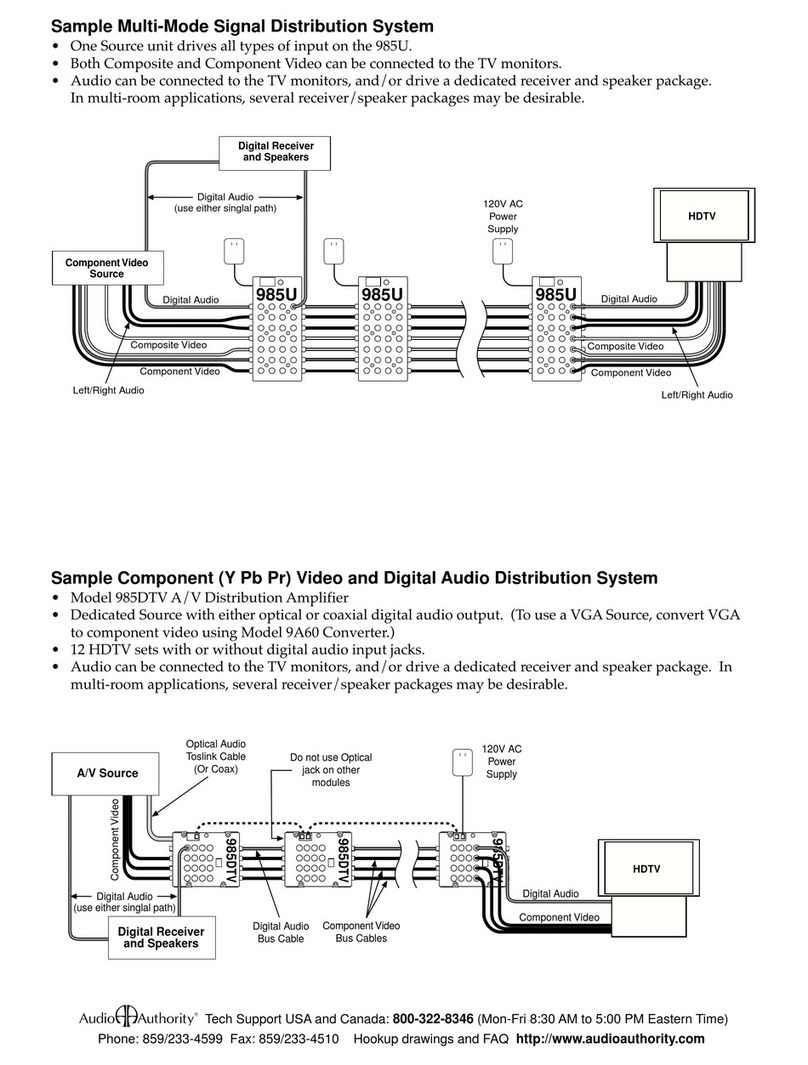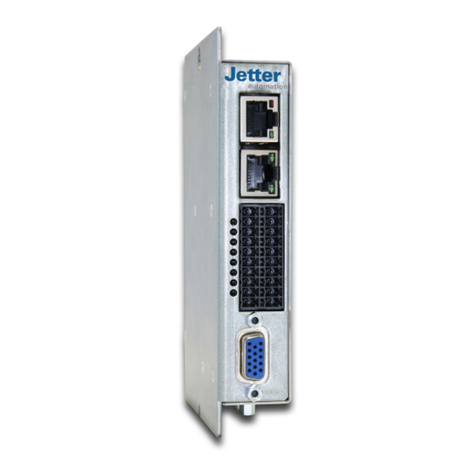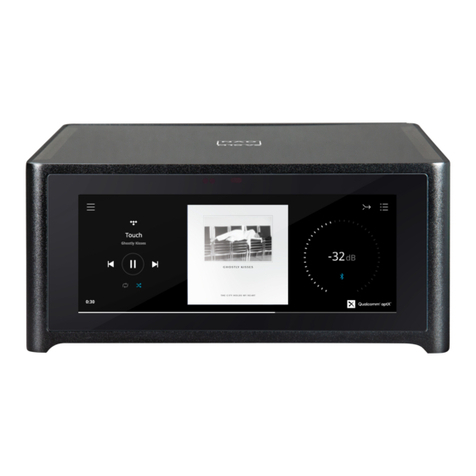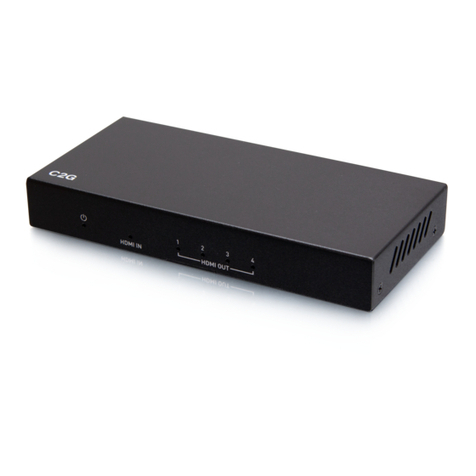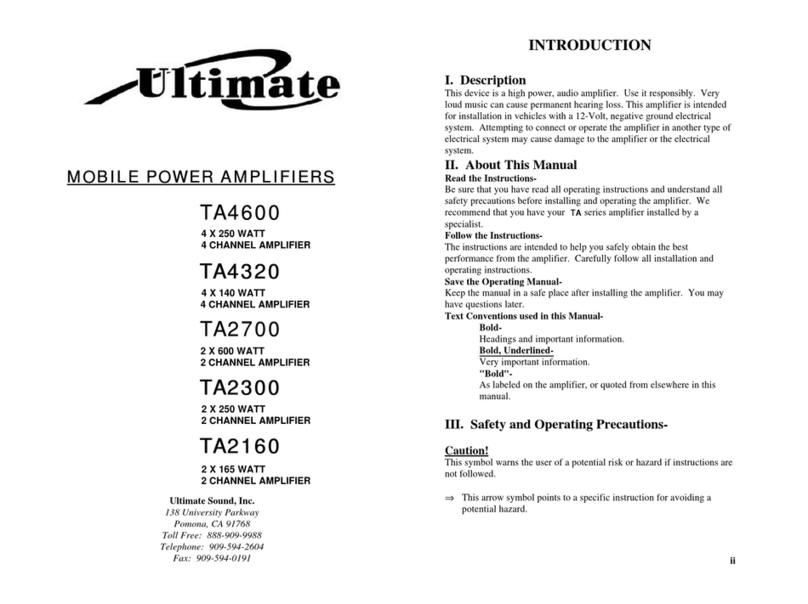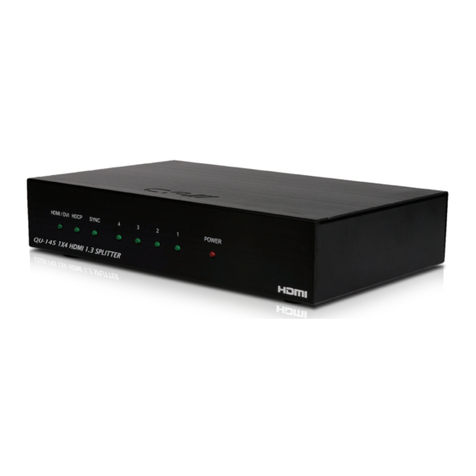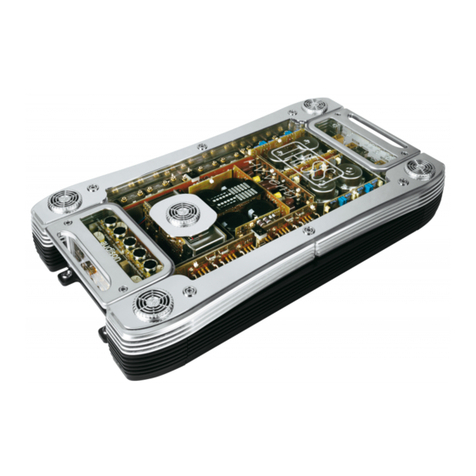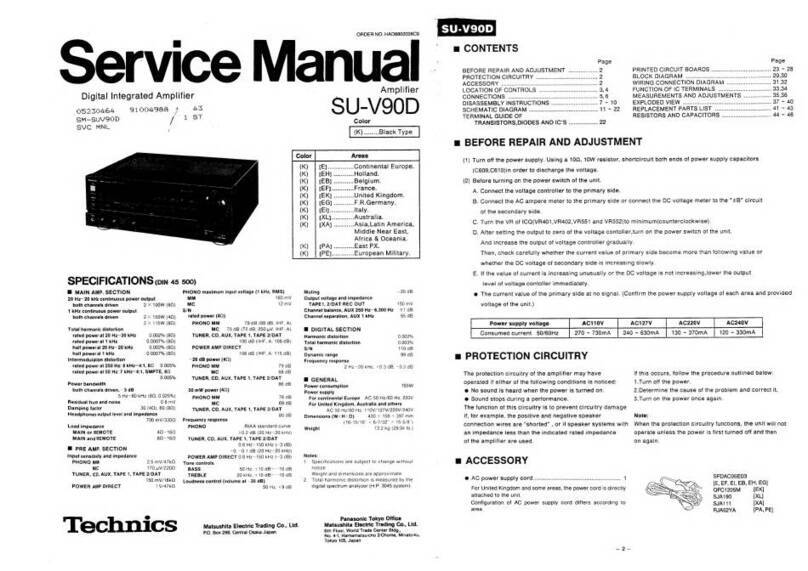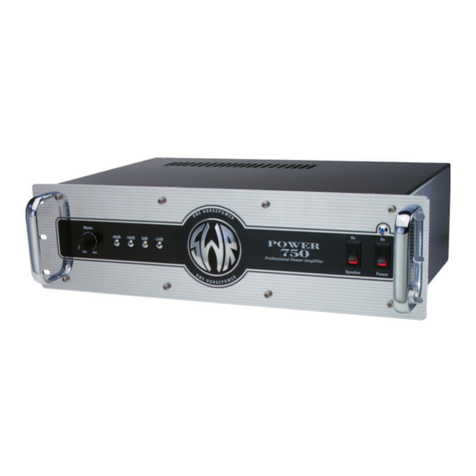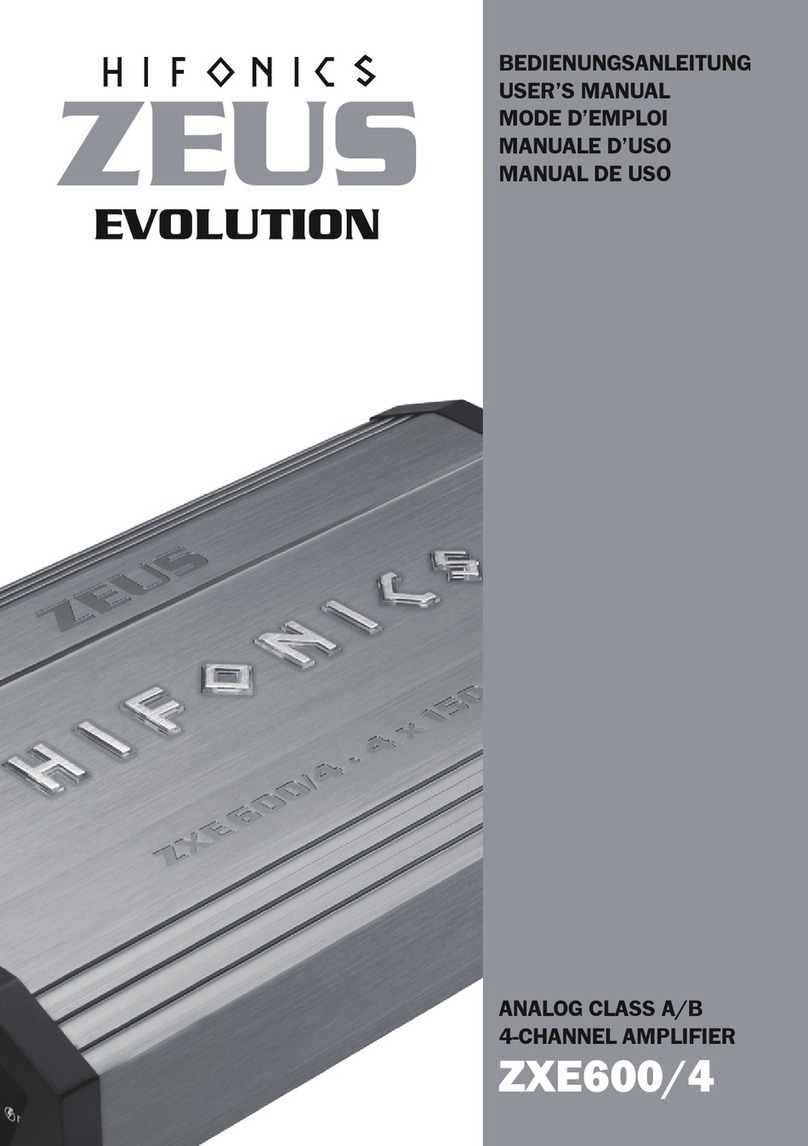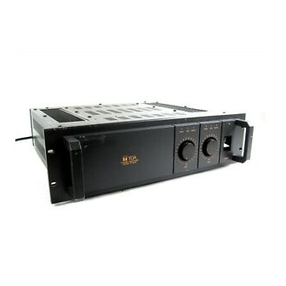
The IRON knob may disappoint some who expect a
radical and obvious effect. It can be subtle, especially
for mid-range dominant sounds like vocals and gui-
tars because for the most part a transformer affects
the extreme lows, extreme highs and to some degree
the dynamics. This control is build around the actual
output transformer and lets face it, a good audio trans-
former shouldn’t be particularly colored and messy.
On the other hand, it has always been the transformers
in vintage gear that helped then sound warm, smooth
and round, yet were quite OK at passing audio pleas-
antly and without major damage. The IRON control
allows you to adjust the “Transformer Contribution”
from near zero audible effect, through to “typical” at
12:00, and further to where the effect is exaggerated
and practically tripled, which by the way, is still not
always obvious.
At very low frequencies a transformer can be said to
have 3 signicant effects: 1) it rolls off the subsonic
frequencies starting around 10 Hz, which is audible
due to the phase shift that happens mostly below 50
Hz, which acts to slightly delay the extreme lows. 2)
Hysteresis shapes the waveform for low level, low
frequency signals, putting a couple of bends around
the zero-crossing, which simply adds harmonics. 3)
Hot low frequency signals, can cause the transformer
to saturate or overload, again causing harmonics, and
may cause earlier roll-off, and more phase shift. It is
in the transformer design details that set the amount
and balance between those effects, and mostly a func-
tion of the core lamination material and size (weight
or bulk), but also a function of the number of turns of
wire, and how the transformer is driven, and the ex-
pected load. We design and manufacture these trans-
formers in house at Manley Labs.
At very high frequencies, the biggest effect is a ultra-
sonic roll-off. This can be as gentle as 6 dB per oc-
tave for several octaves but typically becomes 18 dB
per octave. In fact, the way that capacitance between
windings and leakage inductance interact, usually
creates a signicant bump in the frequency response
somewhere between 30 kHz and 100 kHz, which is
then tamed as standard procedure, by adding a re-
sistor and capacitor at the output or secondary, leav-
ing a smooth predictable roll-off usually around 80k
– 120 kHz. This still leaves some phase shift in the
5k - 20kHz range which is audible and gives one the
impression that the highs are softer and don’t extent
to innity.
This may surprise some people, but some designers
and researchers including yours truly, have experi-
mented and determined for themselves, at least, that
we might need a frequency response out to 500kHz or
1 megaHz to completely avoid any audible phase shift
in analog audio circuits and where absolute transpar-
ency is the goal. Then again, our ears adjust rapidly to
rather drastic roll-offs even as low as 10kHz and we
often choose a rolled-off high frequency response as
being more pleasant and comfortable. And some might
say, “no microphone or speaker can reproduce those
frequencies, so why bother?” but these effects are rela-
tive and additive, so every little bit may be audible
for those that can compare. And considering the best
audio systems only approximate full range live per-
formances, then maybe one of the signicant reasons,
is these infra-sonic and ultra-sonic roll-offs happening
too early, causing phase shift in the audible spectrum
and audible time smear. Dynamic performance is an-
other reason, but lets not dwell on that now. Given the
capabilities of modern audio, and the demands of the
audience, much of the goal is creating illusions and
emotional impact. This is how we should approach the
controls on the TNT, and maybe what should become
the criteria for choosing it against other preamps.
By now, you have probably correctly guessed that
turning the IRON control counter-clockwise results in
a cleaner, tighter bottom and extension in the highs.
Turning the IRON control clockwise results in a
rounder, smoother, warmer and softer tone. The mids
won’t be affected much, and mostly only in a rela-
tive way compared to the lows and highs, but if your
ears are great, you might notice a subtle effect with
IRON maxed, where the mids arrive slightly before
the lows and highs and that this is a big part of the
vintage sound. And if you have been reading carefully,
the transformer is biased in “70’s” mode so the IRON
control will have a slightly different (and greater) ef-
fect. You may have also picked up that the IRON knob
acts like an EQ knob, where it has near zero effect as a
circuit when the knob is straight up at 12:00.
We also mentioned that the ¼” output does not use
the transformer but is affected by the IRON knob. As
before, the IRON circuit is essentially bypassed when
the knob is straight up. Turning it counter-clockwise
introduces the transformer correction circuit, and with
this output, creates an Anti-IRON effect. Extreme
highs and lows are boosted slightly. As the Iron knob
is turned up, you introduce the effects of a transformer
into a transformerless output.
17




















